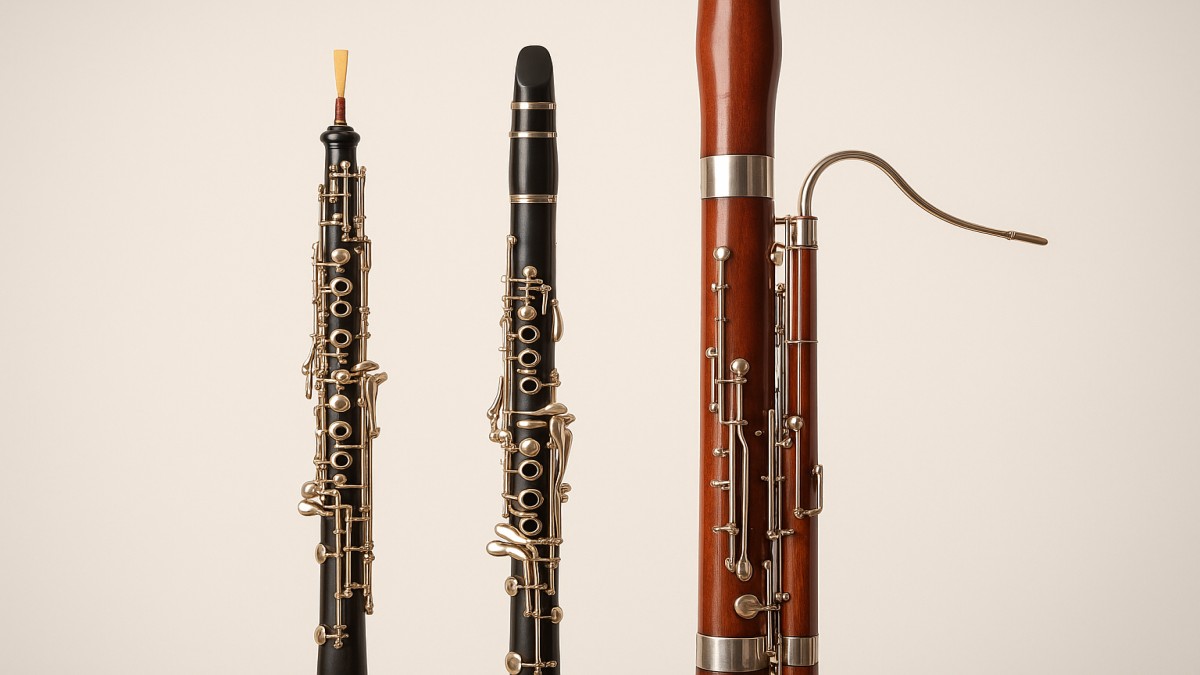Introduction to Orchestral Reeds
Orchestral Reeds. When you listen to a symphony, you might be swept away by the sweeping strings or the thunderous brass but some of the most soulful sounds come from a much smaller source: the reed. Without reeds, many woodwind instruments would simply be breath and silence.
What Are Orchestral Reeds?
In the simplest terms, a reed is a thin strip—traditionally made from cane—that vibrates to produce sound when air passes through it. In an orchestra, they’re the heartbeat of woodwind instruments like clarinets, oboes, and bassoons.
The Role of Reeds in an Orchestra
Reeds are not just a part of the instrument; they’re the voice. They shape the instrument’s tone, personality, and responsiveness. Swap one reed for another, and you might feel like you’ve changed the whole instrument.
Types of Orchestral Reeds
Single Reeds
Single reeds use one piece of cane attached to a mouthpiece.
Clarinet Reeds
Clarinetists rely heavily on reed choice for warm, round tones or bright, piercing notes.
Saxophone Reeds
Although more common in jazz, saxophones also appear in orchestral works, especially in modern compositions.
Double Reeds
These use two thin pieces of cane tied together.
Oboe Reeds
Known for their penetrating, emotional sound.
Bassoon Reeds
Produce deep, reedy tones that are both rich and playful.
English Horn Reeds
Similar to oboe reeds but longer and tuned for a lower, more haunting tone.
The Craft of Reed Making
Some musicians prefer making their own reeds—part science, part art.
Handmade vs. Machine-Made Reeds
Handmade reeds offer personalization; machine-made reeds provide consistency.
Materials Used in Reed Construction
Cane is still king, but synthetic materials are gaining traction.
The Importance of Reed Strength and Cut
A “hard” reed might give better projection, while a “soft” reed can be easier for beginners.
How Reeds Affect Sound Quality
Tone and Timbre
A reed’s cut and condition directly influence whether the tone is warm, bright, dark, or nasal.
Dynamic Range and Articulation
Good reeds respond instantly, letting players go from whisper-quiet to full volume without losing quality.
How Weather and Humidity Impact Reeds
Humidity can soften reeds; dry air can cause them to crack.
Choosing the Right Reed
Matching Reeds to Player Skill Level
Beginners often start with softer reeds; professionals might use harder ones for richer sound.
Genre and Style Considerations
A reed perfect for Baroque music might be unsuitable for jazz or modern orchestral work.
Testing and Selecting Reeds
Many musicians test multiple reeds before concerts to find “the one.”
Reed Maintenance and Longevity
Proper Storage Techniques
Cases with humidity control keep reeds stable.
Cleaning and Conditioning Reeds
Gentle cleaning prevents mold and prolongs usability.
Signs a Reed Needs Replacement
Fraying edges, warping, or dull sound are key indicators.
Common Reed Problems and Solutions
Cracking and Splitting
Usually caused by dryness or overuse.
Warping and Softening
Often the result of high humidity.
Adjusting Reeds for Better Performance
Sanding or trimming can fine-tune response and tone.
Famous Orchestral Works Featuring Reed Instruments
Iconic Oboe Solos
Tchaikovsky’s “Swan Lake” and Rossini’s “William Tell Overture.”
Memorable Bassoon Passages
The opening of Stravinsky’s “The Rite of Spring.”
Clarinet Masterpieces in Orchestral Music
Rhapsody in Blue by Gershwin.
The Future of Orchestral Reeds
Synthetic Reeds and Their Pros/Cons
Longer-lasting but sometimes lacking the warmth of cane.
Technological Innovations in Reed Production
Laser-cutting ensures precision and uniformity.
Environmental Sustainability in Reed Making
Efforts are being made to sustainably harvest cane and reduce waste.
Conclusion
Reeds might be small, but in the world of orchestral music, they’re giants. They give woodwinds their voice, bridging the gap between air and artistry.
FAQs
1. Why are reeds so important in orchestral music?
Because they shape the tone, response, and personality of the instrument.
2. How long does a typical reed last?
From a few days to a few weeks, depending on usage and care.
3. Are synthetic reeds as good as cane reeds?
They offer durability but may lack some tonal richness.
4. Can a bad reed ruin a performance?
Absolutely—many players carry multiple spares for this reason.
5. Do all woodwinds use reeds?
No—flutes, for example, are reedless.

 Blog2 months ago
Blog2 months ago
 education2 months ago
education2 months ago
 Blog2 weeks ago
Blog2 weeks ago
 News2 months ago
News2 months ago



















